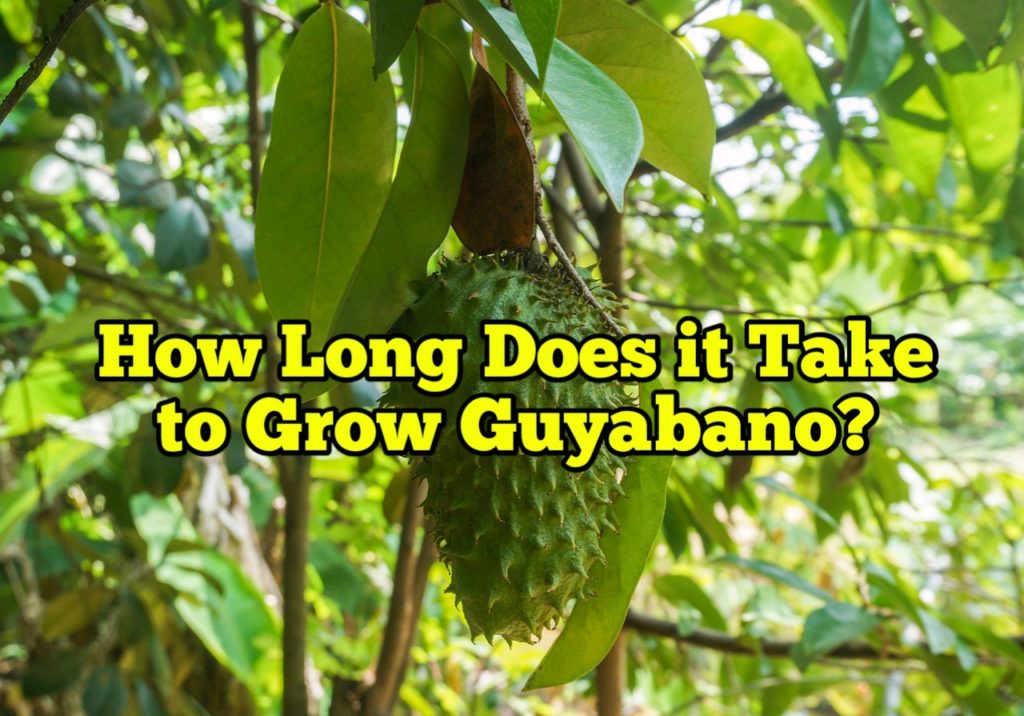
Guyabano, also known as soursop, is a tropical fruit tree native to the Caribbean, Central America, and South America. It is widely cultivated for its deliciously sweet and tangy fruit, which is popular in many parts of the world. However, like many fruit trees, the time it takes for a guyabano tree to bear fruit can vary depending on several factors.
How Long Will Guyabano Bear Fruit?
The time it takes for a guyabano tree to bear fruit can vary depending on several factors, including its age, growing conditions, and cultivation practices. Generally, a young guyabano tree can take anywhere from 3 to 5 years to produce its first fruit, with the yield gradually increasing as the tree matures.
However, some varieties of guyabano may take longer to fruit, with some trees not producing fruit until they are 7 to 10 years old. Once a guyabano tree begins to bear fruit, it can continue to produce for many years, with some trees remaining productive for up to 20 years or more.
However, the quality and quantity of the fruit may decline over time, especially if the tree is not properly cared for. Regular pruning, fertilization, and pest control are important for maintaining the health and productivity of a guyabano tree.
It’s worth noting that the fruiting season of guyabano trees can vary depending on the location and climate. In tropical regions, where guyabano trees thrive, the fruiting season can occur year-round, with multiple harvests per year.
In other regions, such as subtropical areas with cooler temperatures, the fruiting season may be limited to a few months out of the year. Understanding the specific needs and characteristics of your guyabano tree is essential for maximizing its fruit production potential.
Guyabano Tree Height
Guyabano trees are known for their large size and can grow up to 10 meters tall or more, depending on the variety and growing conditions. However, the height of a guyabano tree can also be affected by various factors, such as pruning, soil quality, and weather conditions.
Pruning is a common practice used to control the height of guyabano trees, as well as to promote healthy growth and increase fruit production. Regular pruning helps to maintain the shape and size of the tree, as well as improve air circulation and sunlight exposure to the branches and leaves.
The soil quality is another important factor that can impact the height of a guyabano tree. Guyabano trees grow best in well-draining, nutrient-rich soils that are slightly acidic. Poor soil quality can stunt the growth of the tree and limit its height.
It’s essential to provide the tree with regular fertilization and appropriate watering to promote healthy growth and development. Additionally, weather conditions, such as high winds and heavy rainfall, can also affect the height of guyabano trees. It’s important to provide adequate support to the tree to prevent damage during severe weather conditions.
Guyabano Planting Distance
When planting guyabano trees, it’s important to consider the recommended spacing distance between each tree. The distance between each guyabano tree should be around 4 to 7 meters apart, depending on the variety of the tree and the growing conditions.
Planting trees too closely together can limit their growth potential and lead to competition for nutrients and resources. Proper spacing also ensures that each tree receives adequate sunlight, air circulation, and room for healthy root growth. Additionally, proper spacing can also help to prevent the spread of pests and diseases among the trees.
How To Germinate Guyabano Seeds?
Germinating guyabano seeds is a relatively simple process, but it requires some patience and care. First, you will need to remove the seeds from a ripe guyabano fruit and clean them thoroughly with water.
Next, soak the seeds in water for 24 hours to help soften the seed coat and promote germination. After soaking, plant the seeds in a well-draining potting mix and cover with a thin layer of soil. Keep the soil moist and warm, ideally between 25-30°C, and avoid exposing the seedlings to direct sunlight.
Germination can take anywhere from 1 to 8 weeks, depending on the growing conditions and the quality of the seeds. Once the seedlings have developed a few leaves, they can be transplanted into larger containers or planted directly into the ground. With proper care and attention, your guyabano seedlings should grow into healthy trees that will produce delicious fruit for years to come.
How To Take Care Of Guyabano Tree?
Taking care of a guyabano tree involves several important tasks to ensure healthy growth and high fruit yield. Here are some tips for taking care of a guyabano tree:
- Watering: Guyabano trees require regular watering, especially during dry periods. However, avoid overwatering as this can lead to root rot. Water the tree deeply once a week, making sure the soil is moist but not waterlogged.
- Fertilization: Guyabano trees benefit from regular fertilization to promote healthy growth and fruit production. Apply a balanced fertilizer every three months during the growing season.
- Pruning: Regular pruning is essential for maintaining the shape and size of the tree, as well as to promote healthy growth and increase fruit production. Prune the tree in the late winter or early spring, removing any dead or damaged branches, as well as any branches that are crossing or rubbing against each other.
- Pest and disease control: Guyabano trees are susceptible to various pests and diseases, such as fruit flies and fungal diseases. Monitor the tree regularly for any signs of infestation or disease and take appropriate action, such as applying insecticides or fungicides.
- Sunlight and temperature: Guyabano trees require full sunlight to thrive and produce fruit. They also prefer warm temperatures, ideally between 25-30°C. Protect the tree from frost and cold temperatures, as this can damage the tree and reduce fruit yield.
